Check out some tunes, yo!
/Really enjoying this collaboration between fellow southpaws Dee J Nelson and Andee Blacksugar. both are fantastic players and people. Check them out and pick it up for $5!
Really enjoying this collaboration between fellow southpaws Dee J Nelson and Andee Blacksugar. both are fantastic players and people. Check them out and pick it up for $5!
I woke up early today and roughed in some body contours on the 71 proto before heading to the office. Definitely a great way to start one's day.
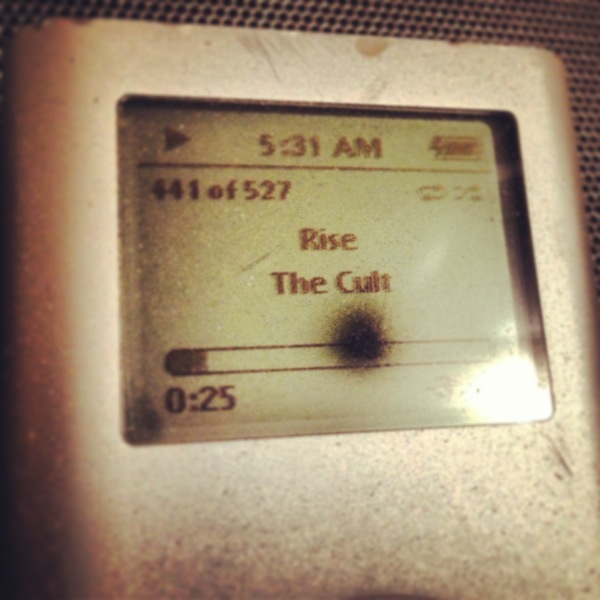
Seems like an apropriate song!
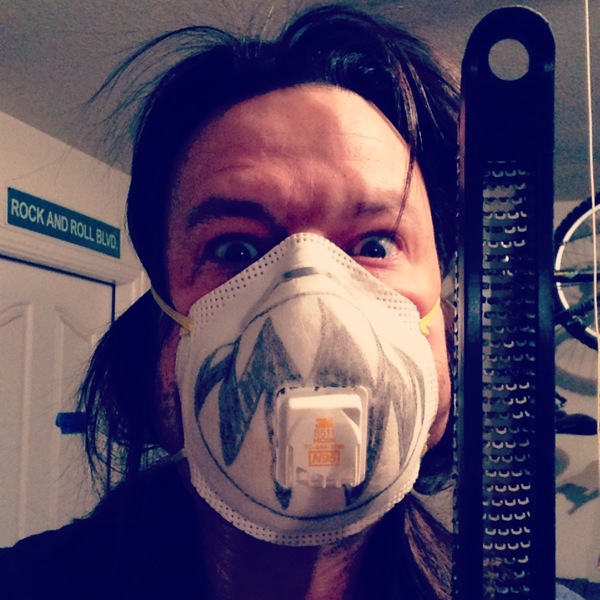
Dust masks are important. As is decorating said dust mask. Also, I love my microplanes!

Roughed in the forearm bevel

Roughed in the cutaway contour and the lap contour
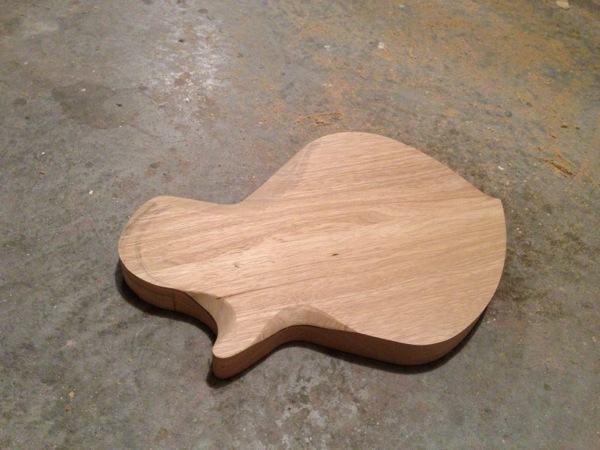
Here's how it is now; clearly a lot more work to do, but it's time to hop in the shower and go to work.
Quick rundown of what's being worked on:
1. Wetsanding and buffing this 622 body
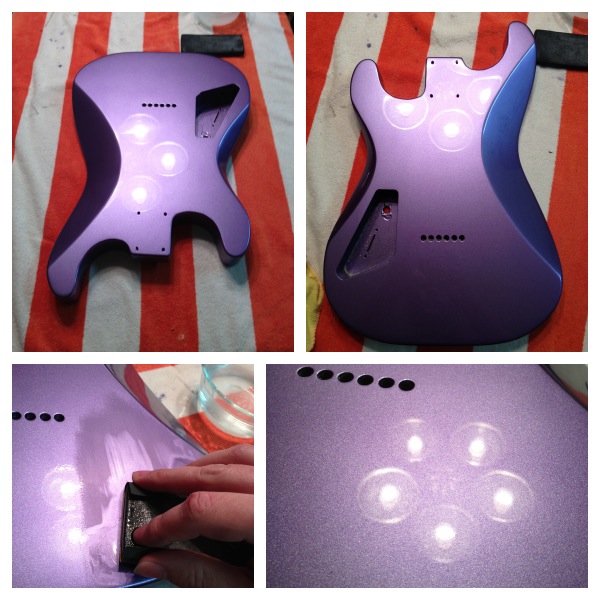
2. Assembly and dialing in this 624T:
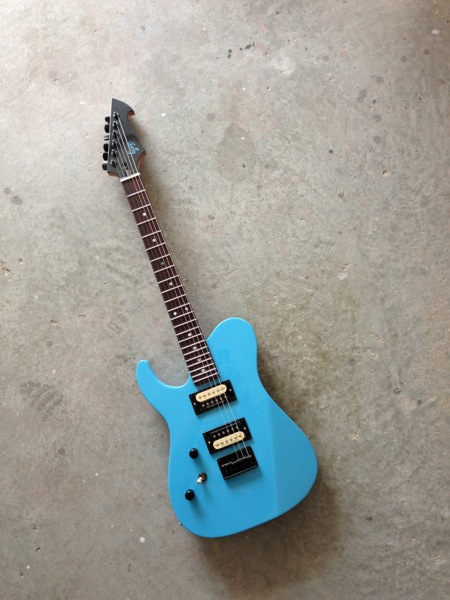
3. More wetsanding and buffing:
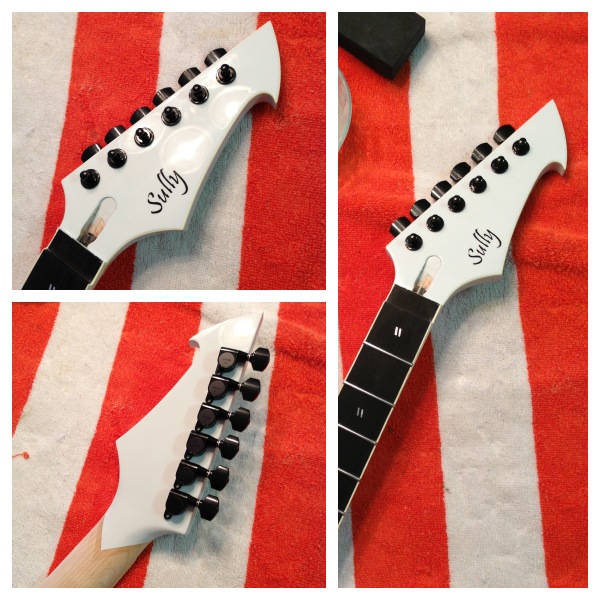
4. Shaped the neck of one of the '71 prototypes
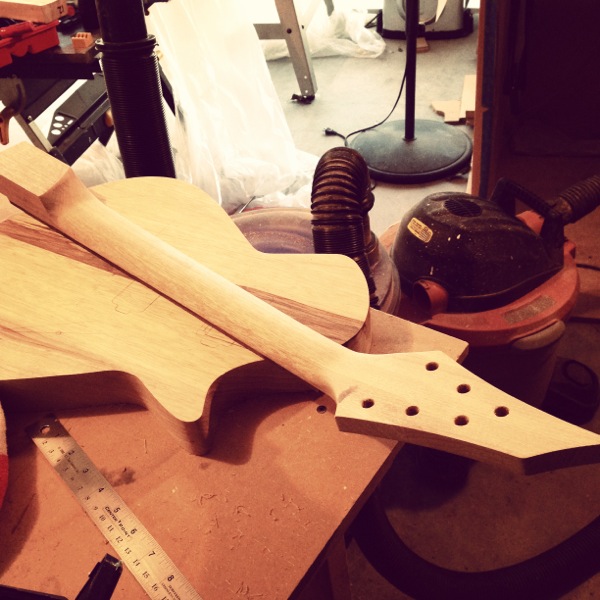
Hey everyone,
I tend to get a fair amount of finishing questions, many of them centered around using Z-Poxy. I've put together a bit of info based on the questions that I get; check it out here.
I hope that helps!
That's right, guitar instructor DJ Nelson creator of Monster Power Chords and Lead Guitar DNA is sharing a lesson with the readers of Guitar Player. In the lesson example DJ uses the whole tone scale in a simple pentatonic format. The lesson can be found on page 96 in the February 2013 issue. If you don't subscribe to the magazine it can be read through iNewsstand on the iPad and iPhone.
Check it out, yo!
Just finished and ready to ship. Neck through 24 fret Galaxy V with a quilted maple top and a transparent white finish. There are more shots in the photogallery - check it out!
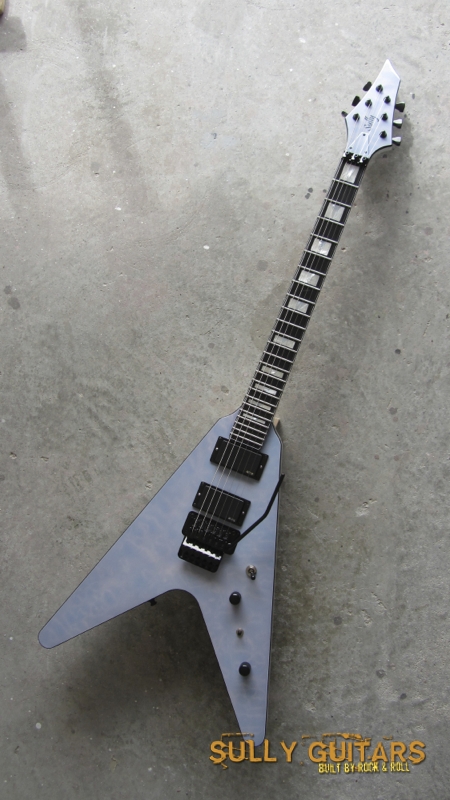
While waiting for parts to arrive in order to complete some guitars, I decided to remove an ebony fretboard and truss rod from a neck that I built (but will not use) and use them to complete a neck blank. Recycling is good! The neck blank was ready for headstock binding as well, so I decided to get out the ol' clothing iron and have a old time fretboard removal/headstock binding party. Here's how it went:
Set the iron on its highest setting and start at the end of the fretboard. I used a t-shirt rag between the iron and the fretboard. If you're going to do this, leave the frets in; it'll help transfer the heat from the iron and get the glue softened up. This task isn't particularly difficult, but it does take time to heat the glue up enough so that you can separate the fretboard from the neck.
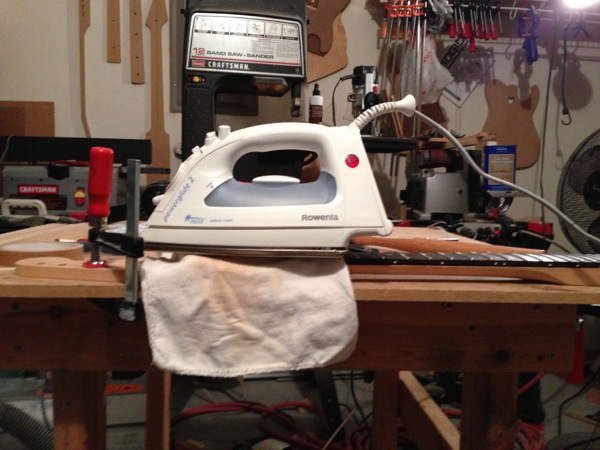
While the iron does its job, I got to work on binding the headstock. I'd add a strip, then go back to the iron and work on the fretboard removal, and then repeat.
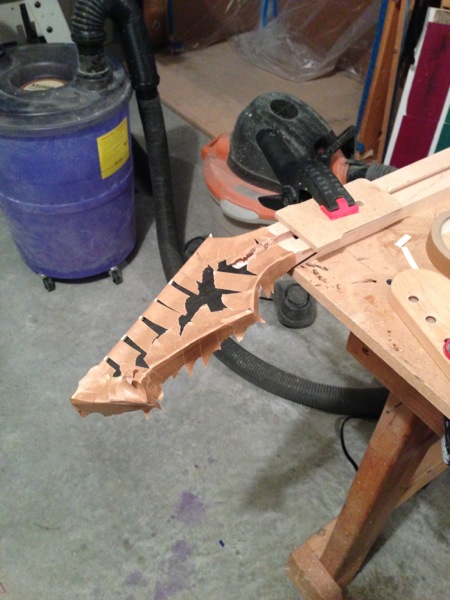
Just about done!
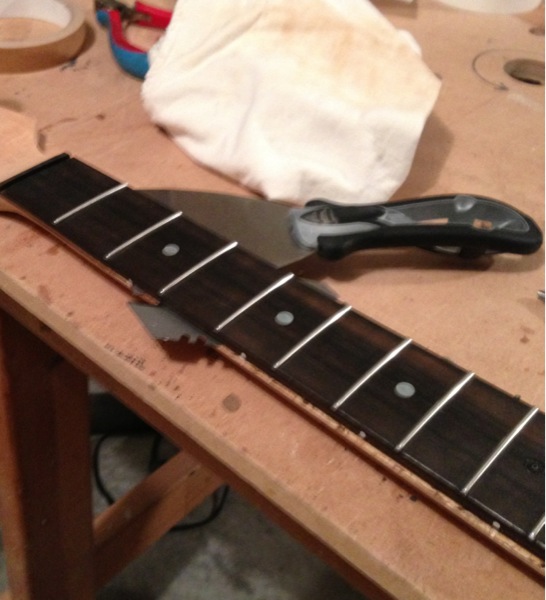
Now the fretboard is off; next step is getting the truss rod out (pretty simple, it mostly just lifts out).
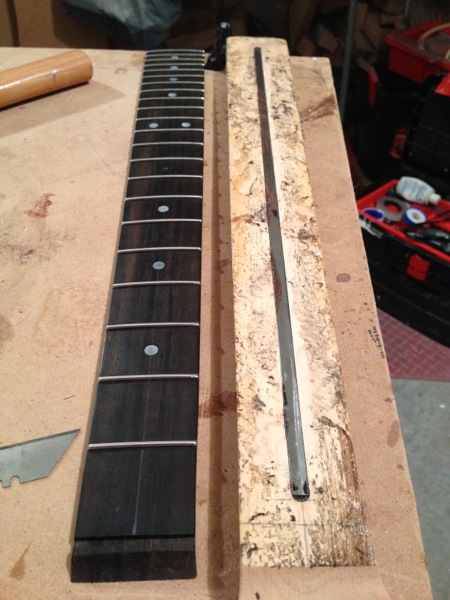
I clamped the fretboard to a flat surface to keep it nice and flat and prevent any curling that may occur, and you can see how the neck should look when complete.
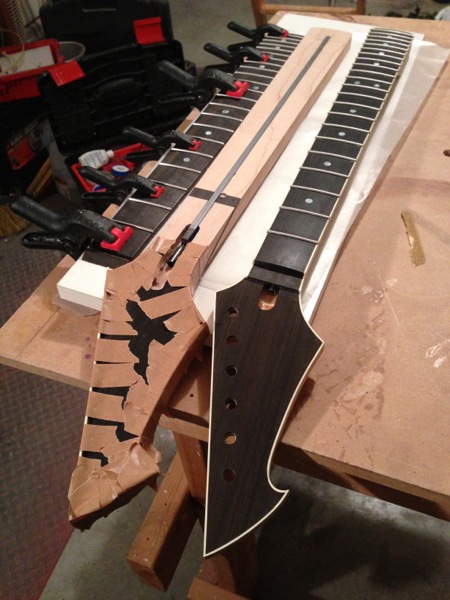
The next evening, I scraped the binding flush with the ebony and pulled the frets. The fretboard will need to be trimmed so that it can be bound, and you definitely don't want to rout a fretboard with stainless steel frets in it; be nice to your router bits!
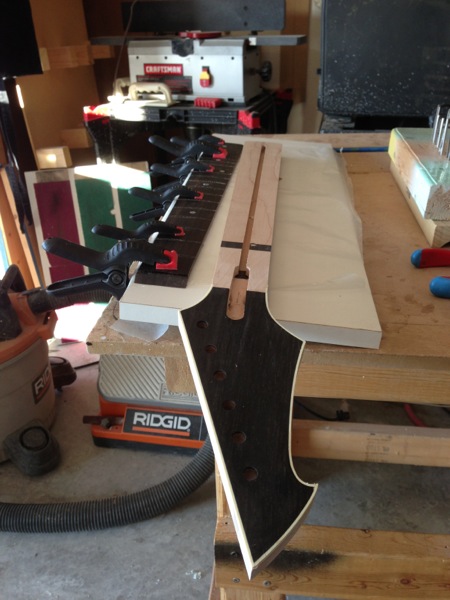
Starting to look more like a neck!
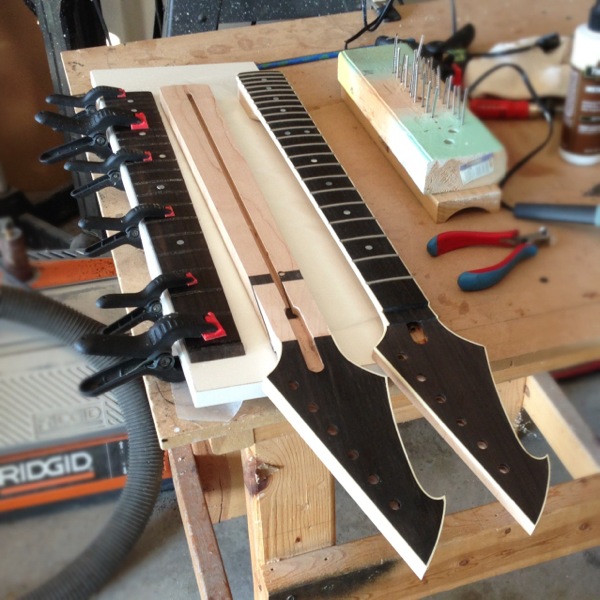
This Catfish has a highly figured maple top in a pattern known as Angel Step, or Angel Stair. The final color will be trans purple, but in order to really accentuate the figuring, I'll dye it black first, then sand most of the black away before adding the purple final color.
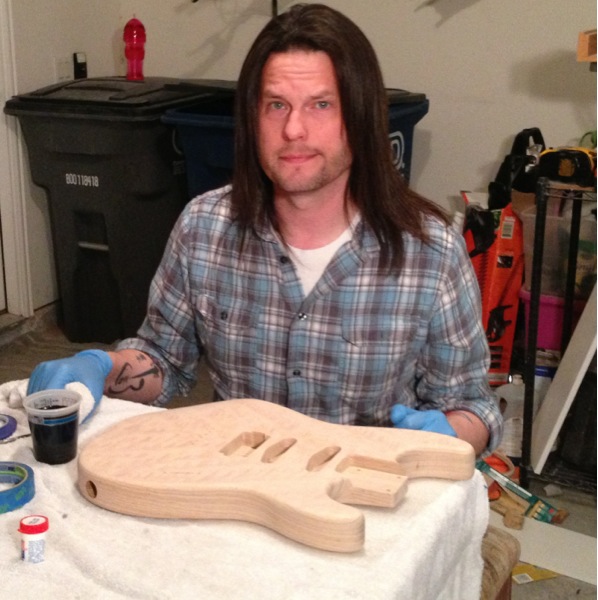
Here are some shots when it's wet:
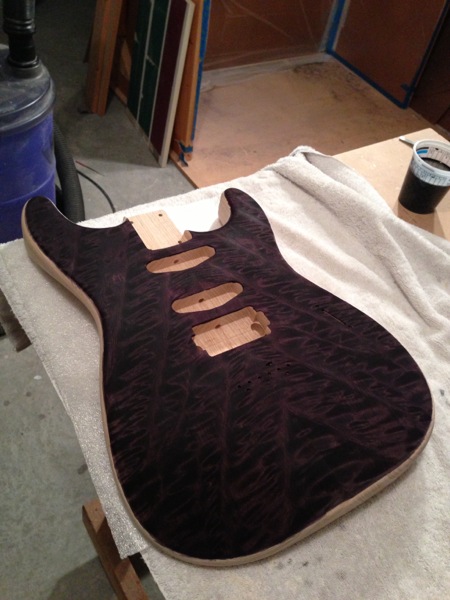
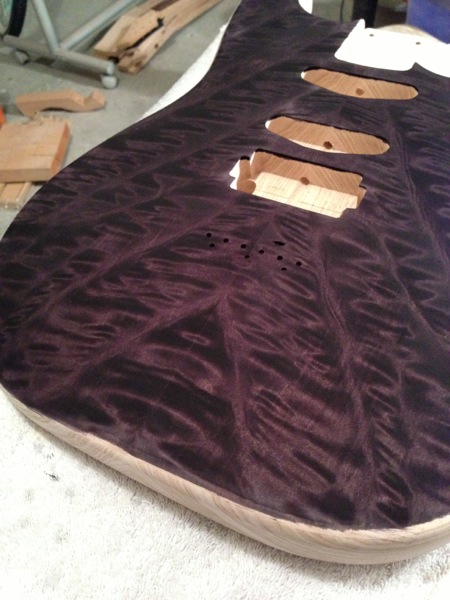
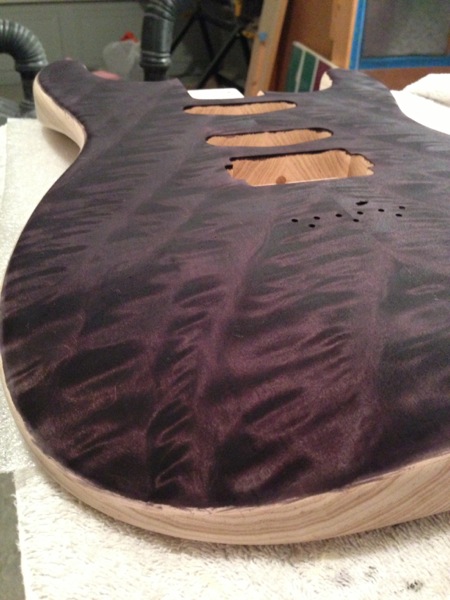
Dry and in sunlight. Pretty dramatic figure, for sure!
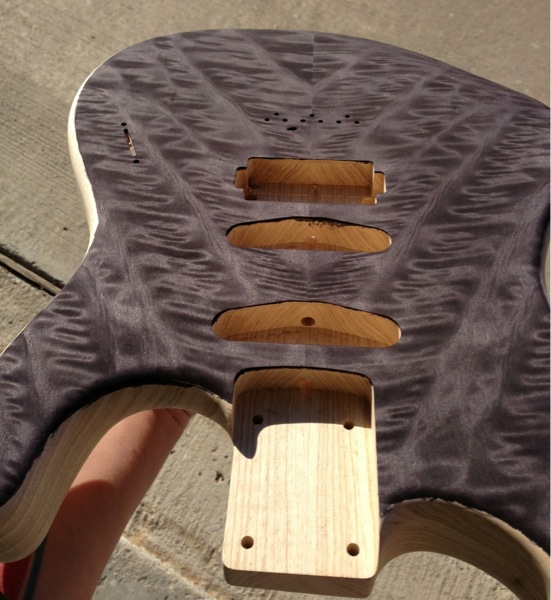
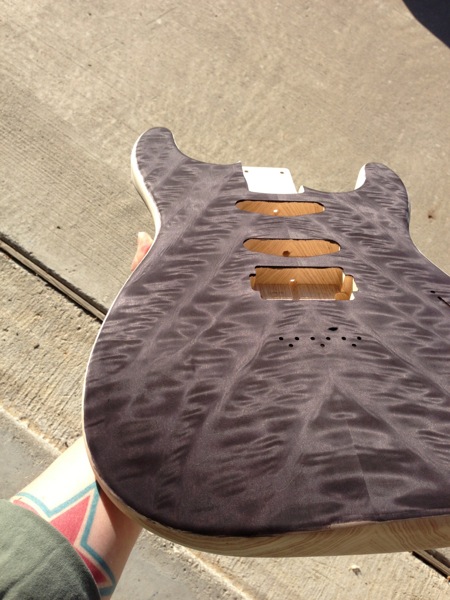
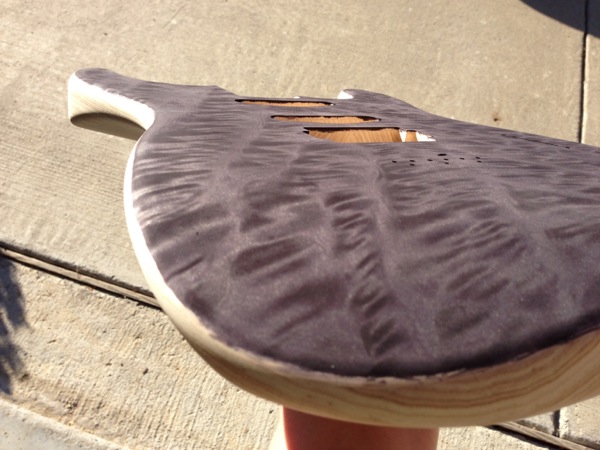
Swamp Ash Catfish getting some color and clear coats.
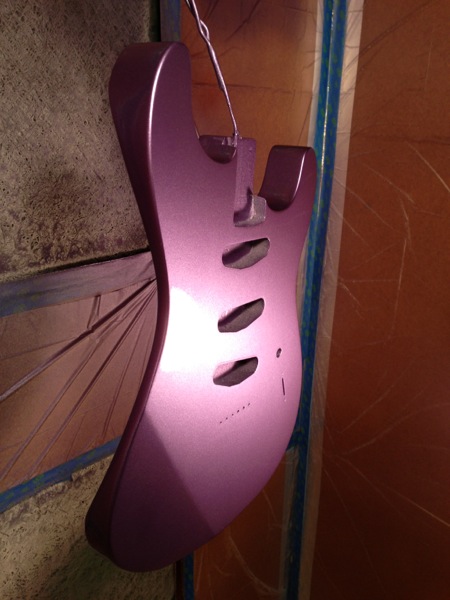
Here it is in the daylight - the color shifting is pretty neat in different lights.
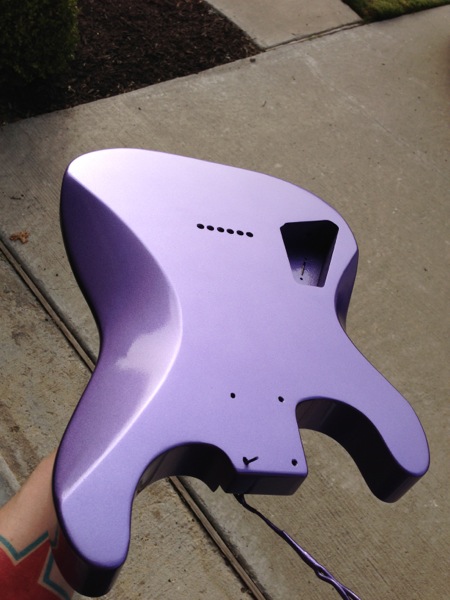
And a 624 getting the same.... I have to say that my favorite part of the 624 is the back. Contouring this body shape is a lot of fun.
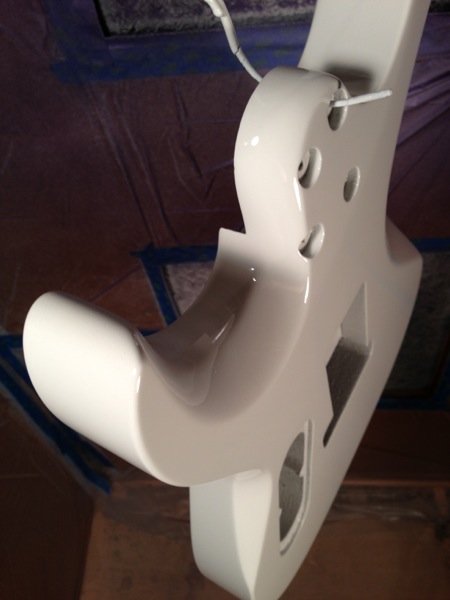
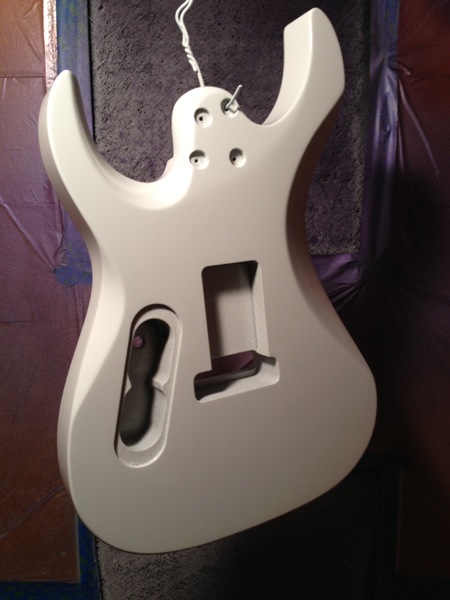
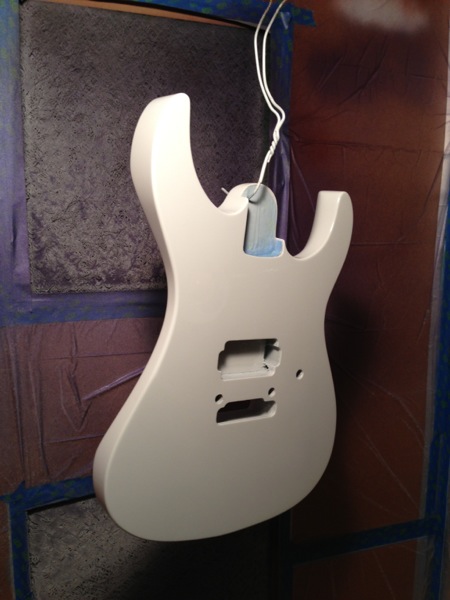
I really like the shadow in this pic.
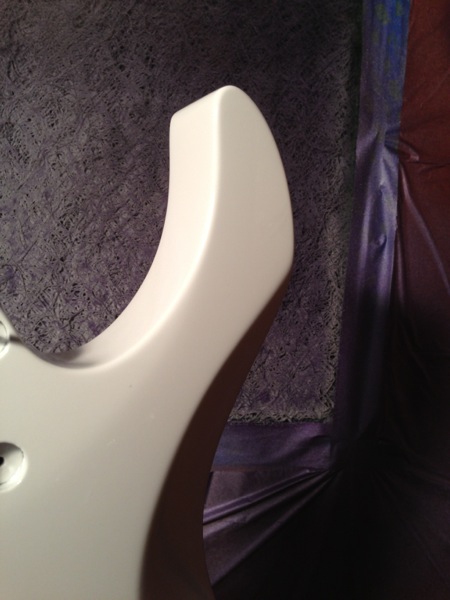
Killer guitars built by Rock & Roll
“When Morgan Freeman retires I vote that you should be the person to narrate everything.”
Sully Guitars®, ‘71®, Stardust®, Astro™, 622™, 624™, 624T™, 625™, 92™, Revolution™, Elita®, Supernova™, Built By Rock and Roll™ are trademarks of Sully Guitars. All rights reserved.
Some of our partners:
“Yes. Yes, I did it. I killed Yvette. I hated her SO much...it-it- the f - it -flam - flames. Flames, on the side of my face, breathing-breathl- heaving breaths. Heaving breaths... Heathing...”
— Mrs. White